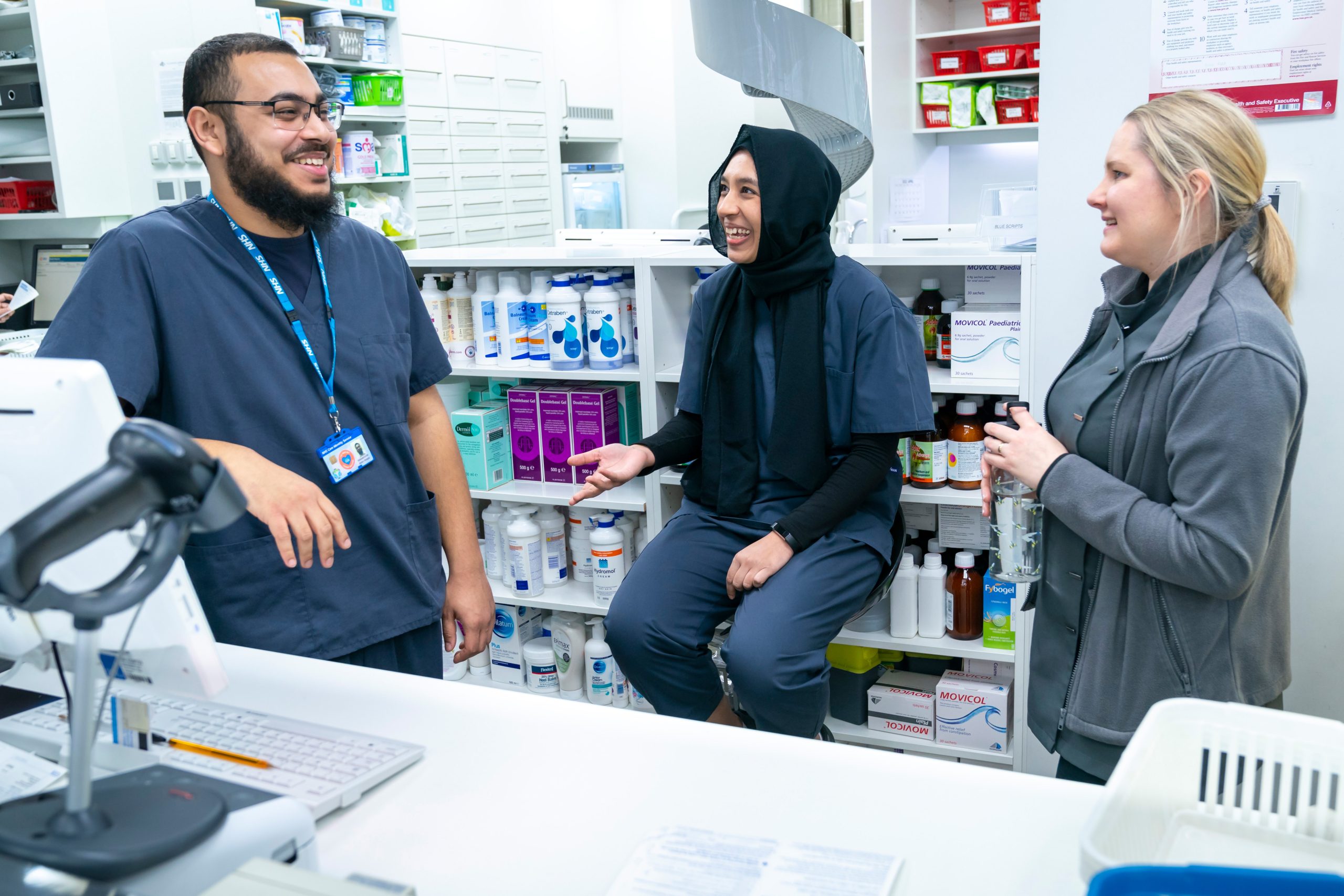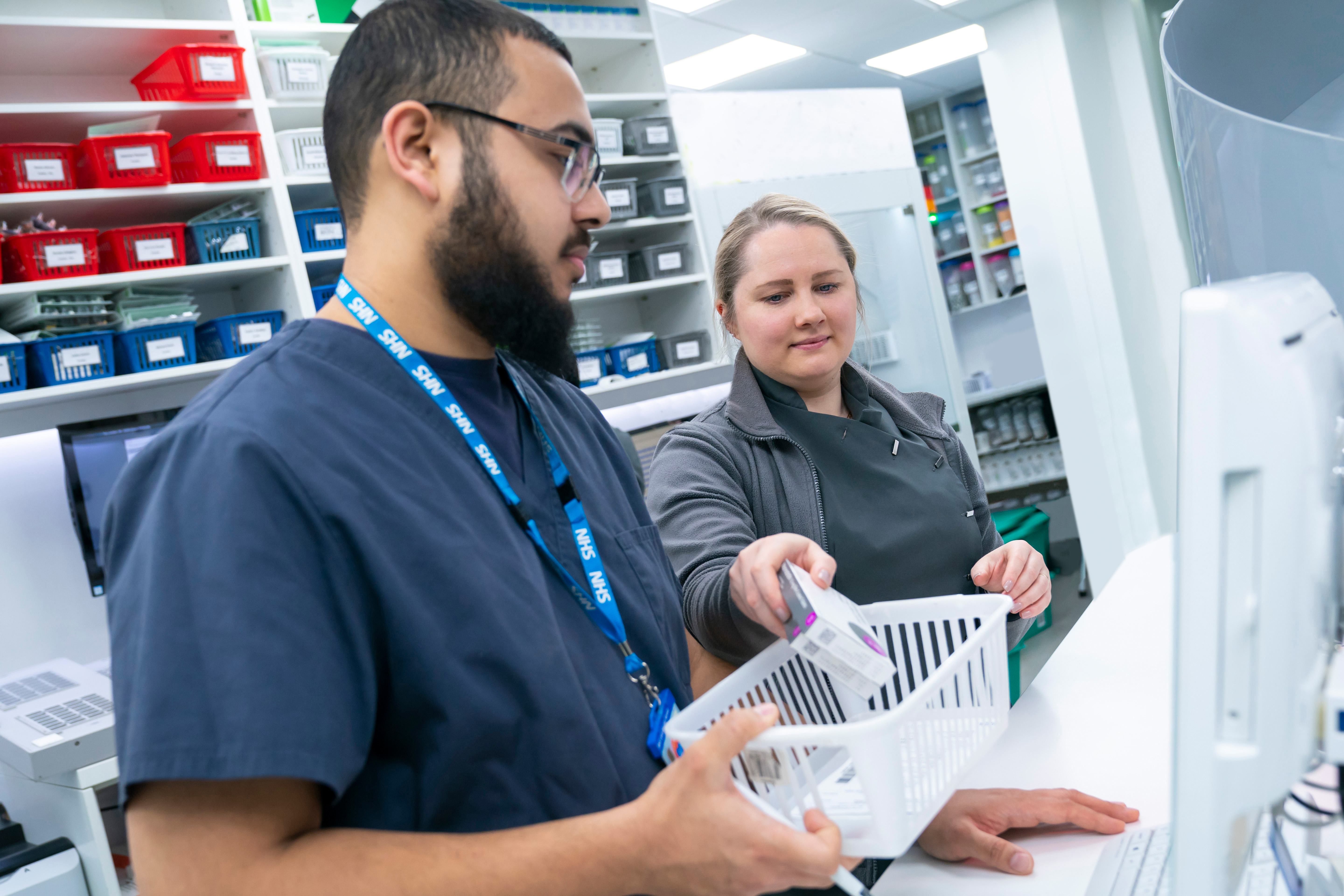
Embracing a Workplace Wellbeing Culture
Find out how you can make a positive impact on your team and workplace environment through our Embracing a Workplace Wellbeing Culture course for pharmacy managers, supervisors, and leaders.

The workplace becomes a much healthier and happier place when we choose to assume best intentions of one another
The workplace becomes a much healthier and happier place when we choose to assume best intentions of one another. This simple yet powerful mindset invites warmth, patience and appreciation into our daily interactions. When we assume positive intent, we’re less likely to react with anger, frustration, or defensiveness—and more likely to respond with curiosity, compassion and warmth.
Assuming best intentions means believing that people are doing the best they can with the tools, knowledge and emotional capacity they have in that moment. It’s about pausing before judging and asking, “What might be going on for them?” rather than jumping to negative conclusions. It’s a practice of empathy, and like any practice, it takes time and intention to grow.
Assuming best intentions doesn’t mean always ignoring inappropriate communication or behaviour from a colleague—especially if it’s repeated. It’s important to address such behaviour constructively and seek support if needed, for example through your employer, trade union or Pharmacist Support.
Find out more about our specialist employment advice
When a team member is struggling, a manager who assumes best intentions doesn’t default to blame or pressure. Instead, they shift their focus to teaching, mentoring and upskilling. They ask, “How can I help this person succeed?” rather than, “Why aren’t they performing?”
This shift transforms the manager from a taskmaster into a coach or guide. It builds trust, fosters growth, and creates a culture where people feel safe to learn and evolve.
Assuming best intentions isn’t always easy. In fact, it can feel unnatural at first. That’s because our brains are wired with a negativity bias — a survival mechanism designed to keep us alert to danger. In modern life, however, this bias can lead us to misinterpret neutral or ambiguous situations as threats.
You may have heard the phrase, “Neurons that fire together, wire together.” This means that the more we think a certain way, the stronger those neural pathways become. If we’ve spent years reacting with suspicion or defensiveness, those responses become automatic.
But here’s the empowering truth: we can rewire our brains. We can build new pathways—ones rooted in trust, kindness and optimism. It takes effort, but it’s absolutely possible.
If you feel upset by someone, pause and ask yourself, “Is there another way to interpret this?
Listen to podcasts, read books, and follow voices that promote empathy, growth and hope.
Spend time with those who see the good in others and encourage you to do the same.
The more gently you treat yourself, the more naturally you’ll extend that grace to others.
A working environment thrives when we assume best intentions—not just of our colleagues, but of our managers, our teams, and ourselves. This doesn’t mean we ignore problems or avoid difficult conversations. It means we approach them with openness, not defensiveness; with curiosity, not blame.
When we lead with empathy, we create space for honesty, growth and connection. We build workplaces where people feel safe to be their whole selves.
Next time you feel triggered or disappointed by someone, take a breath and ask:
“What might be going on for them that I can’t see?” and “What if they’re doing the best they can?”
This question doesn’t excuse poor behaviour—but it does invite understanding. And with better understanding, we can build better relationships and feel more in control of our own responses.
If you are a current or aspiring manager, supervisor or leader and are interested in Embracing a Workplace Wellbeing Culture, check out our award winning course.
Find our about our award winning Embracing a Workplace Wellbeing Culture course
Sharing the benefits of assuming best intentions can help build a culture where everyone trusts their colleagues are doing their best—leading to a more respectful and harmonious team.
If you would like to promote the benefits of assuming best intentions, why not share our downloadable resource with colleagues, upload it to your organisations internet site, or print and have on the staff noticeboard?
Assuming best intentions downloadable and printable resource

Find out how you can make a positive impact on your team and workplace environment through our Embracing a Workplace Wellbeing Culture course for pharmacy managers, supervisors, and leaders.

Our thoughts can have a powerful impact on how we feel and behave. The CBT ABC model helps us understand and challenge unhelpful thinking patterns, supporting better emotional wellbeing both at work and in everyday life.

This page includes guidance and support on how to build positive relationships in the workplace, with a short self-study module to help you cement learnings. …